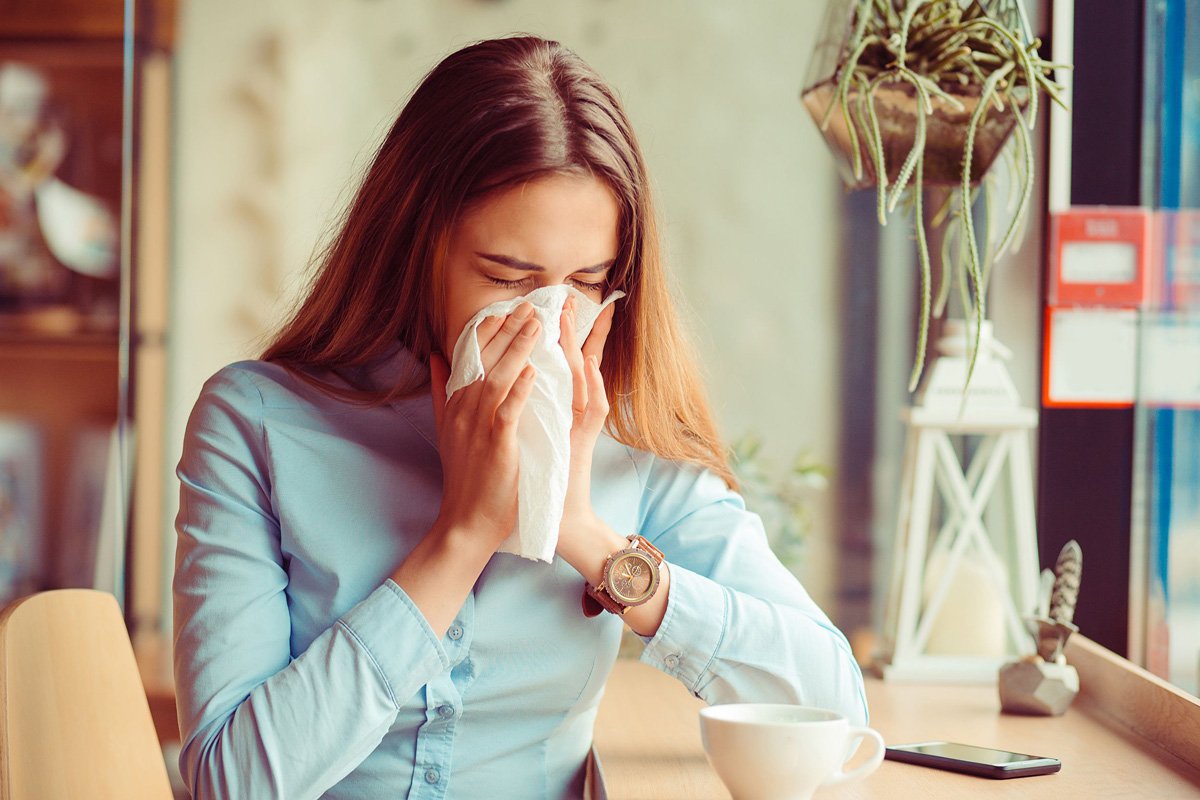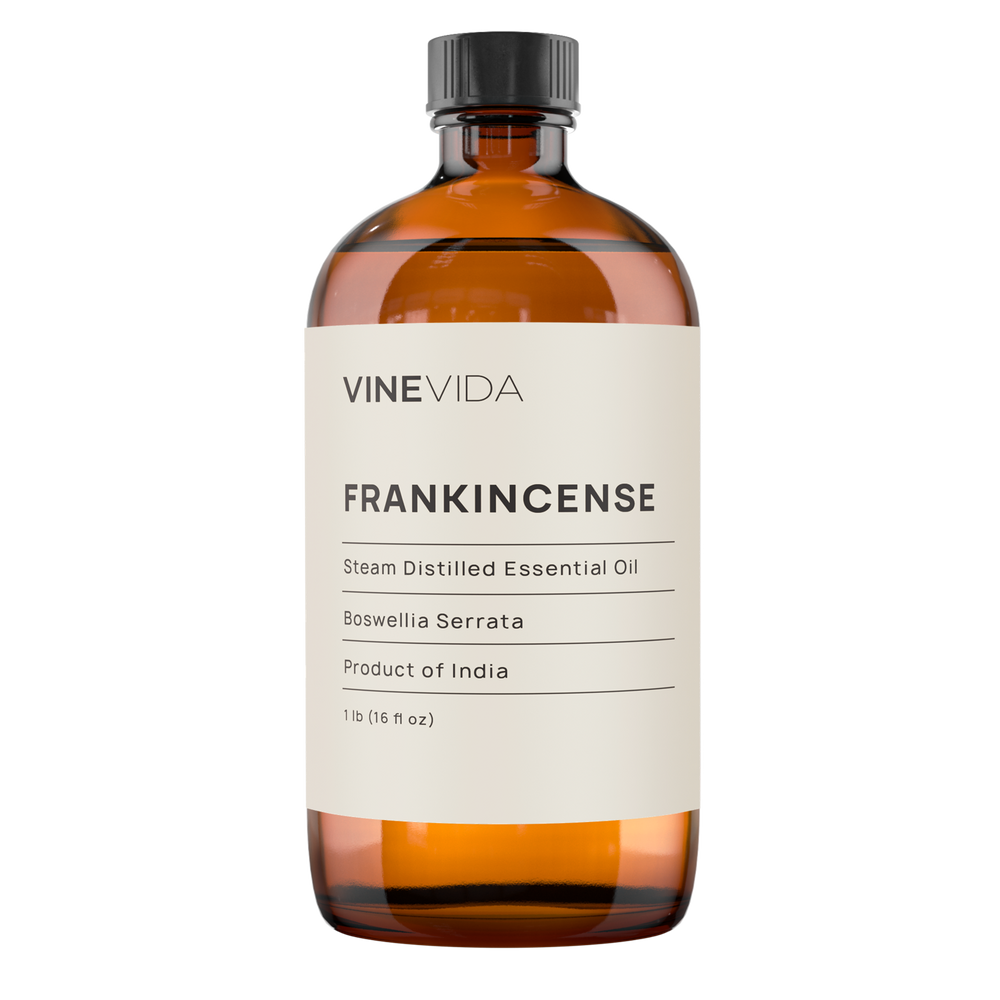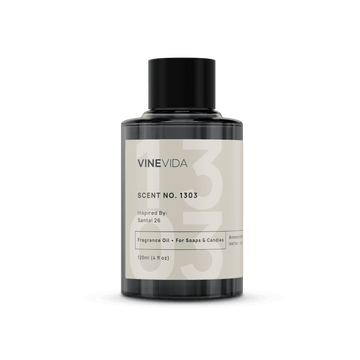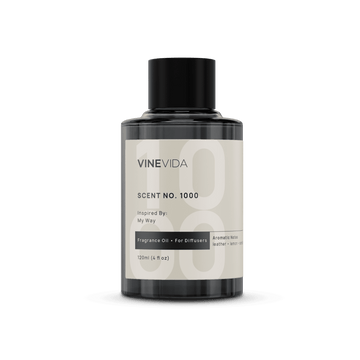Today's blog post looks at the best essential oils for colds. I’m not sure many of us even think about colds these days, do we? We're all too busy worrying about the Germ We Shall Not Name. Of course, the symptoms are very similar, and we never really know what hideous bug we have contracted. This article will break it down into different symptoms and diseases for you.
Let’s begin by thinking about:
The Key Benefits of Using Essential Oils to Treat Colds
There was a time when we could get antibiotics for anything. But as more germs become antibiotic resistant, doctors have become more reluctant to offer them. Clearly, we have many upper respiratory tract infections that we don’t even have pharmaceuticals to treat now.
Interestingly, science shows that nature seems to develop alongside these bugs to evolve as they do, meaning that the germs are less likely to develop resistance to them.
Using essential oils is a fast and dependable way to support healthy immune function and penetrate through congestion.
In addition, essential oils lift your mood and help you focus better.
Antibiotics can have quite harsh effects on the body anyway. Women who suffer from water infections will relate how their medications will often trigger thrush. To do their work, antibiotics necessarily mess with the gut flora and the body’s natural biome.
Using essential oils encourages the body to heal itself rather than being destructive.
Also Read: Best Essential Oil for Stuffy Nose
Use of Essential Oils for Colds
Essential oils can be used topically - onto the skin - or inhaled. There are benefits to both. When applied to the skin, they absorb into the bloodstream to travel around the body.
Oils such as tea trees encourage a healthy immune response.
When inhaled, constituents travel up the nose and settle on the mucous membrane, where the molecules are filtered and cleaned. Then they travel up to the olfactory bulb, a tiny membrane about the size of a dime, where ten million receptors then send information about the fragrance up to the brain about the smell. These are then received by the limbic system, a complex structure involved in cognition, mood, learning, and memory.
En route from the mucous membrane to the brain, the molecules pass through the sinuses. These are hollow spaces of air to help us breathe and to sound the voice box. It’s when fluid is collected here that we start to have problems. Fluid is a beautiful breeding ground for germs; at this point, infections form.
Most importantly, the best essential oils for cold will have drying actions. They will be warming and help reduce this wetness, as they support healthy immune function to allow the body to heal.
Essential oils are made up of many chemical constituents that support body systems, including the lymphatic system and immunity. There is evidence emerging now that germs may even be evolving to become resistant to the antibiotic properties of some essential oils.
At least their effects may not be as practical long term. So, it’s a good idea to think about all the different ways you use tea trees in your day-to-day life and perhaps try to change it up a bit so you always have this superstar working at total capacity when you need it.
Also Read: Best Essential Oils for Sinus
What Essential Oils Are Good For Colds?
These are easy.
Rather than being prettily fragranced flowers, for the most part, these are herbs and leaves. They have clinical, antimicrobial aromas. There are no surprises here.
Most of us have had at least some experience of oils that unblock the nose, having been added to vapor rubs or sweets, for example. Our list mainly contains essential oils for cold symptoms that will also support the immune system. It’s not exhaustive, and it’s often good to make essential oil blends for colds rather than just concentrating on single oils, so I shall mention others as we go.
Also Read: How to Use Eucalyptus Oil for Cough?
10 Best Essential Oils for Colds
1. Tea Tree Essential Oil
Tea tree is at the top of the list of the best essential oils for colds because it can always be trusted, as long as you treat it with care and dilute it. It has antimicrobial, antiviral, antifungal, and antiseptic properties, so, for the most part, you don’t even need to know what’s wrong with you for it to be helpful. We whack on a drop of tea tree as soon as we feel under the weather.
First, and most importantly, when we are thinking about the best essential oils for colds, is to consider how best to support the immune system. When the body identifies something, it feels to be a threat, it instructs the system to send white blood cells to defend the system. A variety of white blood cells are recruited. Macrophages, in particular, surround the pathogen to overpower it.
Apart from being top of the list of the best essential oils for colds, it is, of course, great for coughs and one of the best essential oils for fever blisters and cold sores. We’ll address fevers separately. See below.
WAYS TO USE TEA TREE FOR COLDS
It is the best of the best essential oils for cold and flu. Use it for everything when you are ill, but very little when you are not.
Put it in the bath and soak for twenty minutes so its molecules can get good access to the whole bloodstream quickly.
Inhale it: I mean either place a couple of drops in hot water to steam your head with a towel or simply inhale the molecules from the bottle. As predicted, the tea tree unblocks your nose, but the molecules will actively climb into the mucus membranes to start battling on the front line.
Suck the fumes: Open your mouth wide. Hold the bottle right at the front to four mouths so you can gasp the molecules. Take a long, slow deep breath in, making sure the vapors go as far down into the lungs as you can get them. Again, this way, it is fabulous for sore throats. Repeat, maybe ten gasps. Drink the fumes, not the oil. Don’t even get it on your lips because it tastes heinous!
Gargle it: This is a bit naughty because, strictly speaking, this is an internal usage. Add a drop of tea tree oil to a small amount of water, gargle but then spit it out.
Diffuse it to clean the air of germs and use it on a damp cloth to disinfect light switches, toilet flushes, railings, and high-traffic areas.
2. Clove Essential Oil
Now, clove comes second on the list of essential oils for colds because it is high in a serious biological weapon called eugenol. It can kick most germs’ butts with one hand tied behind its back. BUT, it is a skin irritant. We would only really want to use a dilution of 0.5% in massage oil; this is certainly not one of the essential oils for colds and coughs we would want to put in the bath.
Ways to Use Clove Essential Oil for Cold Symptoms
Diffuse it (especially with lemon or orange essential oils) to clean the air. Use it on a damp cloth to disinfect.
See tea tree for details on gasping fumes for sore throats, colds, and chest infections.
Inhale the fumes from the bottle, but do not use hot water steam. The fumes are too irritating to the eyes.
3. Cinnamon Essential Oil
Very similar to clove. Consider how it is a winter smell and is traditionally used on holiday wreaths, which would naturally have been used to try to ward off germs in festive environments.
Again, it’s not great in the bath, and we would only want to use it in minimal amounts in massage oils and creams but diffuse it to clean the air. Cinnamon is one of the best essential oils for colds circulating in the air.
Don’t forget that while the molecules are diffusing, that’s also the air that you will breathe in. This is a much safer way to get cinnamon essential oil into your lungs and bloodstream than if you were applying it to the skin, and colds are respiratory diseases anyway.
WAYS TO USE CINNAMON ESSENTIAL OIL FOR COLD SYMPTOMS
Diffuser.
Inhale from the bottle, although be careful of it being so close to your eyes.
Wipe down surfaces.
4. Eucalyptus Essential Oil
Fabulously decongestant, eucalyptus is blissful if you can’t breathe. It is one of the best essential oils for congestion. Not only does it have antiviral and antibiotic properties, but it is also helpful if you have a fever. This is one of the best essential oils for colds that have the extra gift of chesty coughs or chest infections.
Eucalyptus is one of the best essential oils for colds in adults, but please take care when using it on children. Eucalyptus is high in a constituent called 1,8 cineole which slows respiration, so if we were to use it on children, we would only use it in a dilution of around 0.25% and only use it on their backs. (0.25 works out as less than one drop of essential oil in a teaspoon, so a good guide is to use a tablespoon of a carrier, and you’ll be safe.).
WAYS TO USE EUCALYPTUS ESSENTIAL OIL FOR COLD SYMPTOMS
Safe for adults in the bath or creams and lotions. Likewise, diffusers are great, and a drop on the pillow helps you breathe at night.
Please remember that eucalyptus is not one of the best essential oils in children. Try to replace it with frankincense essential oil
5. Frankincense Essential Oil
The gentlest but the most soothing. Frankincense essential oil decongests while slowing breathing (in a good way). It is relaxing, so it’s lovely for upset children, especially when combined with myrtle essential oil.
WAYS TO USE FRANKINCENSE ESSENTIAL OIL FOR COLD SYMPTOMS
The best essential oils for colds tip we can offer is that kids adore their soft toys smelling of frankincense when they feel ill. This is one of the best essential oils for a head cold. Test it on their number two favorite first. The last thing you want is for them to turn on their most dependable comforter when they already feel ill, put one drop on the top of Teddy's head is usually rough to unblock their nose and have them drifting off to sleep.
By all means, inhale and gasp the fumes and use them in the bath.
Please don’t use frankincense essential oil to clean light switches. It is too precious. If we continue to harvest frankincense at the rate we are, scientists predict there will be none left in 50 years. The spices and tea trees are much more reliable for cleaning and far more sustainable choices.
6. Hyssop Essential Oil
Hyssop essential oil is considered a problematic oil to use because it is high in a chemical group called ketones. People think of ketones as bad guys because they can be neurotoxic (which I’ll explain briefly), but they are also tremendous for breaking down phlegm. Suppose you have a cold with a persistent or unproductive cough. In that case, hyssop will be your best friend, as long as you don’t have epilepsy or suffer from any delusory illness like schizophrenia or psychosis (that’s the neurotoxic bit).
An interesting fact for you: Hyssop essential oil is only rich in ketones if it has been distilled from plants that have not bloomed yet. Some artisan distillers produce oils that are taken after the flowers die off, which creates a much softer essential oil with fewer ketone-related problems but is also not as good for fighting phlegm.
Hyssop is also brilliant for sore throats.
WAYS TO USE HYSSOP ESSENTIAL OIL FOR COLD SYMPTOMS
Easy to use as long as you do not have psychosis, epilepsy, or schizophrenia.
Add to massage oils, creams, lotions, and hyssop are lovely in the bath.
It has a beautiful, slightly aniseedy fragrance that works well in diffusers and is excellent for gargling in some water if you have a sore throat.
7. Ravensara Essential Oil
A powerhouse against symptoms of cold and flu, but should only be used on the skin to a maximum dilution of 1% in adults and is probably best avoided in children.
WAYS TO USE RAVENSARA ESSENTIAL OIL FOR COLD SYMPTOMS
It's lovely to put in the bath or massage oils, creams, and lotions, as long as it is diluted. Remember, particularly for oil like ravensara, that oils and water don’t mix. So, just adding it to the bath doesn’t mean it’s diluted. You need to add 1 drop to a teaspoon of the carrier before you put it in the tub.
It smells pleasant enough for Teddy’s head and is excellent in diffusers to clean the atmosphere.
We love ravensara for inhalants, either directly from the bottle and gasping the fumes, or even better, put it into hot water with a towel over your head.
Read More: Ravensara Essential Oil.
8. Ginger Essential Oil
If you have chills and just can’t get warm, the ginger essential oil is fantastic. Again, so easy to use.
While essential oils don’t have side effects, they have many main effects. Everything ramps up when you use ginger oil. You will get hotter, and your thoughts will be more energetic, but essential if you already have loose bowels, use a light touch with the ginger, or you may run the risk of diarrhea.
WAYS TO USE GINGER ESSENTIAL OIL FOR COLD SYMPTOMS
If you are cold, add it to any massage oils, creams, and lotions. It’s a bit fierce to add to baths. Add it to cinnamon and clove for unique smelling diffusers that should help to stop the germ from spreading.
9. Black Pepper Essential Oil
Black pepper is rich in a constituent called beta-caryophyllene which we want on our side when we have a cold. It weakly binds to the CB2 receptor, modulating inflammation, immunity, and pain. (You can learn more about that on our copaiba listing because copaiba is also rich in beta-caryophyllene). Black pepper has antiviral properties and is refreshing and warming.
WAYS TO USE BLACK PEPPER ESSENTIAL OIL FOR COLD SYMPTOMS
We only want one drop of this at the most. It is not quite as hot as clove or cinnamon essential oils, but we should be cautious.
Use massage oils, creams, and lotions, but perhaps not in the bath.
Add it to diffusers.
DO NOT USE AS AN INHALANT - Even though Black pepper is one of the best essential oils for colds, it is also an irritant to the mucus membranes. (Think of what happens if you sniff ground pepper).
This is probably too strong an oil for use on children.
10. Myrtle Essential Oil
The Romans used to place myrtle wreaths onto their warriors' heads when they returned home from battle. There is a definite sense of Brave Little Soldier to it. It has an antitussive action, which helps to stop you from coughing, particularly spluttery coughs.
Myrtle is excellent for coughs and colds but has a beautiful healing effect on upset children and distressed people.
WAYS TO USE MYRTLE ESSENTIAL OIL FOR COLD SYMPTOMS
Add it to everything!
Safe in the bath, for adults, although I wouldn’t want it in the water for real littlies; perhaps add to the top of Teddy’s head or massage oils instead.
Essential Oils for Fevers
This is a bit of a bone of contention. It’s not very safe to use essential oils for fevers. Likewise, the body makes a fever as a way to overcome a germ. You witness the actions of an army of white blood cells overcoming a pathogen. Despite what you might expect, fevers are our friend. It’s the body doing what it’s supposed to do.
We often associate fever spikes with seizures, and yes, that can happen. But it’s not the fever itself that creates the issue. The problem doesn’t arise because the temperature has gone up, per se. It’s the rapid temperature change, that is. So, indeed, someone burning up is not ideal, but neither is shocking the temperature down.
So, while we might think we are helping to reduce the fever, we might also accidentally cause harm.
The best essential oils to cool the fever would be peppermint and spearmint, but use them with care. Peppermint, in particular, would be like leaping into an ice-cold bath.
Dilute to just 1%, and perhaps 0.25% for children (so one drop of oil in one tablespoon of carrier serves here). Soak a face cloth in excellent, but not cold, water, then put a small number of your essential oils for fevers and mix it onto that.
To stress, for the most part, if you can avoid it, it is better not to use essential oils for fevers.
DIY RECIPES: Essential Oil Blends for Colds

Ok, so let’s see how we can combine these best essential oils for colds to make some great remedies.
Essential Oils for Colds and Sore Throat
GARGLE FOR SAD THROATS
- 2 fl oz water
- 1 tsp honey
- 1 drop Hyssop essential oil (Hyssopus officinalis)
- 1 drop Tea tree essential oil (Melaleuca alternifolia)
- 1 drop Roman Chamomile essential oil (Anthemis nobilis)
Safety: In cases of epilepsy, schizophrenia, or delusory illnesses, omit the hyssop. This one can be used during pregnancy; however, please gargle and spit in all cases!
MASSAGE OIL WITH THE BEST ESSENTIAL OILS FOR COLDS AND SORE THROAT
- 1 tsp Grapeseed carrier oil (Vitis vinifera)
- 10 drops Tamanu carrier oil (Calophyllum inophyllum)
- 3 drops Tea tree essential oil (Melaleuca alternifolia)
- 2 drops Lavender essential oil (Lavandula angustifolia)
- 1 drop Ravensara essential oil (Ravensara aromatica)
Method of use: Rub onto the front of the throat and upper chest as often as required
Safety: Not suitable for use during the first 16 weeks of pregnancy. This blend can be adapted for children by increasing the carrier oil to one tablespoon.
ESSENTIAL OILS FOR HEAD COLDS
- 1 tsp Grapeseed carrier oil (Vitis vinifera)
- 10 drops Tamanu carrier oil (Calophyllum inophyllum)
- 3 drops Tea tree essential oil (Melaleuca alternifolia)
- 1 drop Sweet Basil essential oil (Ocimum basilicum)
- 1 drop Eucalyptus essential oil (Eucalyptus globulus)
Method of use: Rub on the forehead, shoulders, and the back of the neck as often as required
Safety: For a child, replace the eucalyptus with frankincense.
Not suitable for use during the first 16 weeks of pregnancy.
What Are the Concerns and Precautions of Using Essential Oils?
As stated, fevers are the body’s natural way of healing. The immune system pushes the temperature up to overcome pathogens. It may seem counterintuitive to want to cool someone down, but rapid temperature changes are dangerous. Do not use essential oils for fevers. If anything, it will be better to use oils like ginger, cinnamon, pepper, or clove to burn the fever out rather than mints to bring it down fast.
The fastest way to feel relief from stuffy noses is to inhale your oils. Make sure you do not put your face too close to the steam and scald yourself. Patience is valuable here.
Do not use eucalyptus and peppermint on children’s pillows since they contain molecules that can slow respiration. Frankincense and myrtle are much safer and gentler alternatives.
Do not use essential oils topically in the first 16 weeks of pregnancy. Inhalation will be safer.
Also Read: Best Essential Oils for Coughs
Other Traditional Cold Treatment Methods
Lots of vitamin C! Get plenty of fruit in you, and enjoy hot lemon drinks with some ginger wine.
Herbal remedies such as Echinacea can also help support healthy immune function.
Conclusion
Just as the last note, it is very understandable that we all want to protect ourselves from germs, but this will inevitably mean we have no immunity against common coughs and colds we would have fought off quickly and easily in the past. These notes are the best essential oils for colds, so please don’t render them weaker by using them as everyday preventatives for things.
Use them sparingly and sensibly when you are well, and you’ll have an army of warriors to help your family to fight their symptoms much more efficiently.
Also Read: What Is Sweet Basil Essential Oil Good For?























